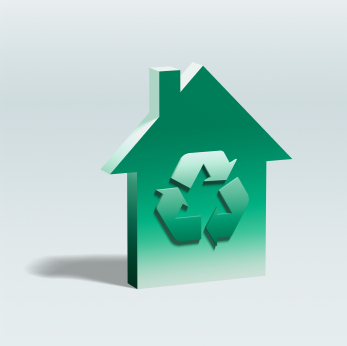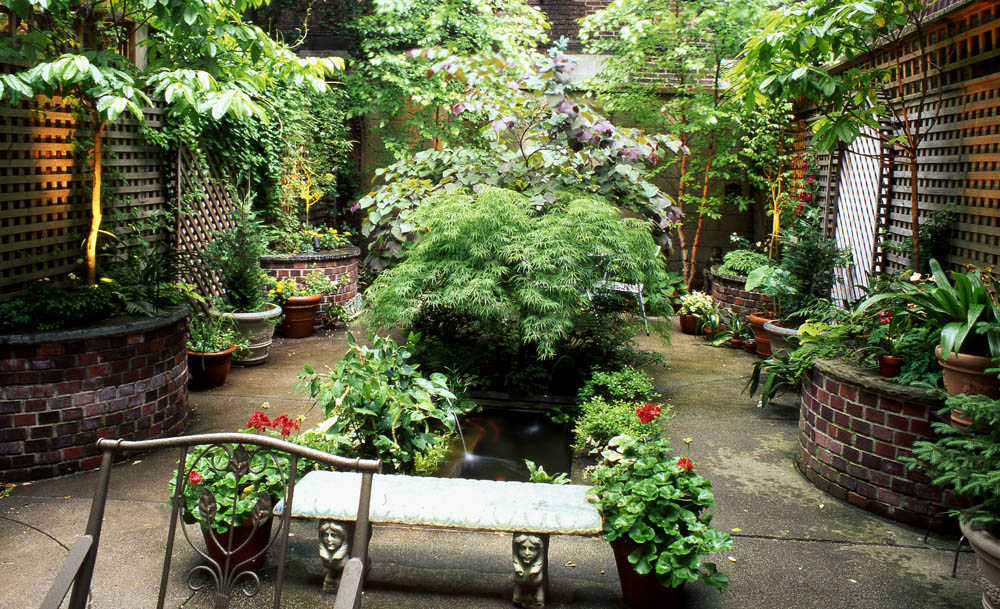 |
 |
 |
|
Save your money and your planet by increasing the energy efficiency of your home. Here are three ways you can do so:
1. Green up your appliances.
Appliance use comprises about 18% of a typical energy bill, with the
fridge being one of the biggest energy drains. If any of your
appliances are more than 10 years old, the EPA suggests replacing them
with energy-efficient models that bear the "Energy Star" logo. Energy
Star-rated appliances use 10%-50% less energy and water than standard
models. According to the Energy Star website, if just 1 in 10 homes
used energy-efficient appliances, it would be equivalent to planting
1.7 million new acres of trees.
2. Watch the temperature. Almost
half a home's energy consumption is due to heating and cooling. Turn
down the thermostat in cold weather and keep it higher in warm weather.
Each degree below 68°F (20°C) during colder weather saves 3%-5% more
heating energy, while keeping your thermostat at 78°F in warmer weather
will save you energy and money. A programmable thermostat will make
these temperature changes for you automatically.
Also, clean your furnace's air filter monthly during heavy usage. Depending on the age  of
your furnace, you may want to consider a new one. Today's furnaces are
about 25% more efficient than they were in the 80s. If you're in the
market for a new furnace, check out ones that have the Energy Star
label. of
your furnace, you may want to consider a new one. Today's furnaces are
about 25% more efficient than they were in the 80s. If you're in the
market for a new furnace, check out ones that have the Energy Star
label.
To keep your home cool in warmer weather, shade your east
and west windows and delay heat-generating activities, such as washing
the dishes, until evening. Whenever possible, use ceiling fans instead
of air conditioners. Light clothing in the summer is typically
comfortable between 72°F and 78°F. Moving air feels cooler, so a
slow-moving fan can easily extend that comfort range to 82°F.
3. Use energy-efficient light.
Compact Fluorescent Light bulbs (CFLs) use 66% less energy than
standard incandescent bulbs and last up to 10 times longer. Replacing a
100-watt incandescent bulb with a 32-watt CFL can save $30 in energy
costs over the life of the bulb.
|
|
 |
 |
|
Environmentally
conscious hosts can now relax! We've consulted with some hosting
experts on how you can turn your next dinner party green. Many of our
tips will add refinement to your dinner party, while keeping it
sustainable for the planet. Invite your guests to the wave of the
future and you may convert some of them to a more sustainable lifestyle!
Cloth material: Use
cloth tablecloths, napkins, and dishtowels. This elevates the elegance
of the evening and saves a few trees in the process. Go one step
further by purchasing these items in organic materials.
Dishware: Even
for casual barbecues, you should opt for non-disposable (and preferably
non-plastic) silverware, glasses, plates and bowls. If this is not
feasible, find compostable/biodegradable products. If you are stuck
with the non-biodegradable variety, be sure everyone recycles.
Ingredients: You
go through a lot to prepare the appetizers and meals. Why not boost the
flavor by buying local? The reduction in carbon emissions and the lack
of pesticides on your guests' plates are carefully disguised in the
unbeatable extra taste that comes with local food.
Dishes: Use
concentrated dish solution and energy-star rated appliances, or wash
the dishes by hand using water conserved while waiting for your
pre-party shower to heat up, or captured in your rain barrel. If you
don't have this, then be mindful of the wasted running water.
Laundry: When
washing dishtowels, hand towels, napkins, and tablecloths, use
concentrated laundry soap with an eco-friendly stain remover -- like
borax or vinegar. You might also want to run the washing machine on the
cold water cycle. This will reduce the amount of energy needed to heat
water.
With these simple tips, now you can be the Hostess with the mostess, and throw a spectacular dinner party, ala green!
|
|
 |
 |

Container
gardening is growing in popularity as more and more people realize that
growing their own food is not only a great way to save money and eat
healthy, but also an earth-friendly practice. If you're living in an
urban setting where you can't till up a nice big garden for yourself,
don't despair. You can grow a wonderful supply of fresh fruits and
vegetables for yourself - all you need is sunlight and a few supplies!
The
main limiting factor in growing fruiting plants is sunlight, so make
sure that your plants will receive six to eight hours of bright sun
each day. If you don't have south-facing windows or a sunny corner,
you can supplement with a plant light. If you are starting from seed,
purchase a seeding tray and keep the soil wet and warm until seeds
germinate, then water regularly. To stimulate root growth, allow the
soil to dry out some between watering, as this will encourage the roots
to grow in search of water, but not to the extent that the plant begins
to wilt for lack of water.
Transplant your seedlings into more
size-appropriate containers once they are strong and healthy. Do your
research so that you know how much space each plant will need - greens
such as lettuce, chard, spinach, and kale aren't going to need nearly
as deep a pot as a tomato or pepper plant will. Feed your plant food
designed for vegetable plants as they grow, and then for blooming
plants as they begin to flower and bear fruit. Consult a gardening
center or book for tips on plant care so that you'll know all the
tricks, such as pinching off suckers to increase fruit size.
If
you do have outside space- a patio, deck, or balcony, the same applies
to you. Start your plants as seedlings indoors and then transition
them into pots outdoors once it is safe. You may need to harden your
plants up by putting them out for a few hours and then bringing them
back in for a day or two. Some plants can overwinter, but many need to
be planted after the last danger of freezing or frost. Just because
your plants are outdoors doesn't mean you're done- make sure to check
that they are getting watered regularly.
|
|
 |
|
|
|
 |
|
In This Issue
|
|
 |
|
Contact Me
|
Your Name
Phone
Website

|

|
|
Largest Private Home in America: The Biltmore Estate
|
America's
largest private home, the Biltmore Estate boasts 250 rooms and 175,000
square feet. Nestled among the Blue Ridge Mountains near Asheville,
North Carolina, the home was also ranked eighth on the American
Institute of Architects’ 2007 list of the top 150 favorite American
structures. Join the more than 1 million visitors who visit the
Biltmore Estate each year to enjoy the home's Gilded Age grandeur, 75
acres of formal gardens, and winery. Guests walking through the home
marvel at unique features like the 70,000 gallon indoor swimming pool,
the bowling alley, the two-story library, one-of-a-kind art and
furniture, and 19th century rarities like elevators, indoor plumbing,
fire alarm, and intercom systems. Out of town guests may enjoy a stay
at the 123-room Inn on Biltmore Estate, an American Automobile
Association (AAA) four-diamond hotel.
|

|
|
|
Patching holes in drywall is a simple process, so save yourself
from hiring someone to do it for you. You don't even have to buy an expensive
drywall kit from a home improvement store. All you'll need is:
- one tub of joint compound
- a plastic or metal spackle knife
- light grade sandpaper
1. Using your putty knife, gently go over the hole that needs to
be patched. This will smooth out the surface, cleaning up the area so it's
ready for spackling.
2. Next, scoop out some joint compound with your putty knife and spread it over
the hole. Don't worry about any excess compound that remains... you'll deal
with it later.
3. Let the compound dry for 24 hours.
4. Using either sandpaper or a sanding block, sand the area until smooth.
5. Lastly, paint over the now smooth repaired drywall, to match the rest of the
wall.
|
|
 |
